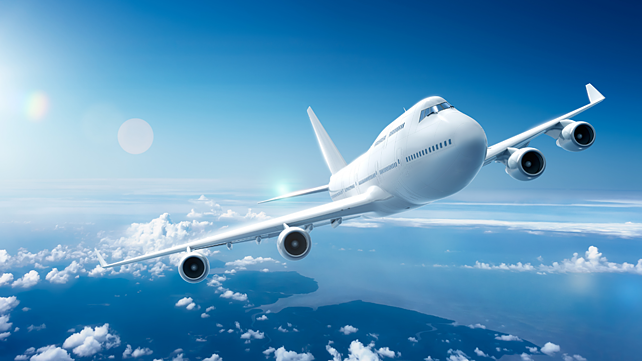
The article is co-authored by Abhilash Abraham
Current Status
Aviation’s contribution to global CO2 emissions has been more than 2.5% in the last few years. Other pollutants emitted by the aviation industry include soot, methane, etc. Considering the impact of these pollutants, it is estimated that the aviation sector contributes to more than 3.5% of total global emissions that are causing global warming.
Consistent innovations in the aviation industry have enabled the industry to reduce its emission levels. This is evident from a minor reduction in levels of CO2 per Revenue Passenger Kilometre (RPK – a measure of distance travelled by paying passengers). The average CO2 emitted per RPK in 2019 was 90 gram, which shows a reduction of more than 10% compared to 2013 levels.
But the demand for air travel will grow consistently in the future, even though the demand dropped drastically due to the COVID-19 pandemic in 2020. This growth in passenger demand will see an uptick in more carriers ordering more fleets to increase their operational networks.
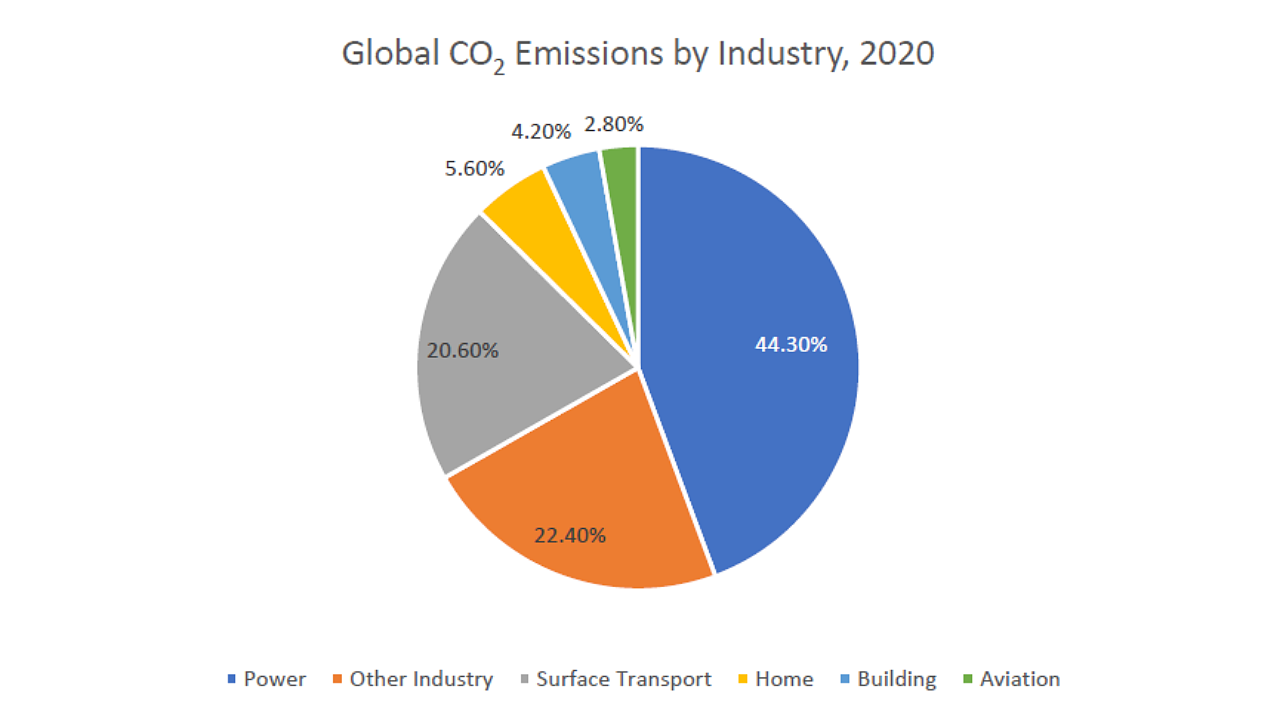
There is a positive correlation between growth in passenger traffic and total emissions, as shown in Exhibit 2. The decline in passenger traffic due to the COVID-19 pandemic has led to a corresponding decline in aviation emissions. But, the emergence of new variants (Delta, Omicron) and other such mutations will further potentially create a volatile scenario for commercial aviation in 2022 and beyond.
Long-term growth postulates the transition from evolutionary to revolutionary technologies with respect to contemporary aircraft configurations and electric propulsion technologies.
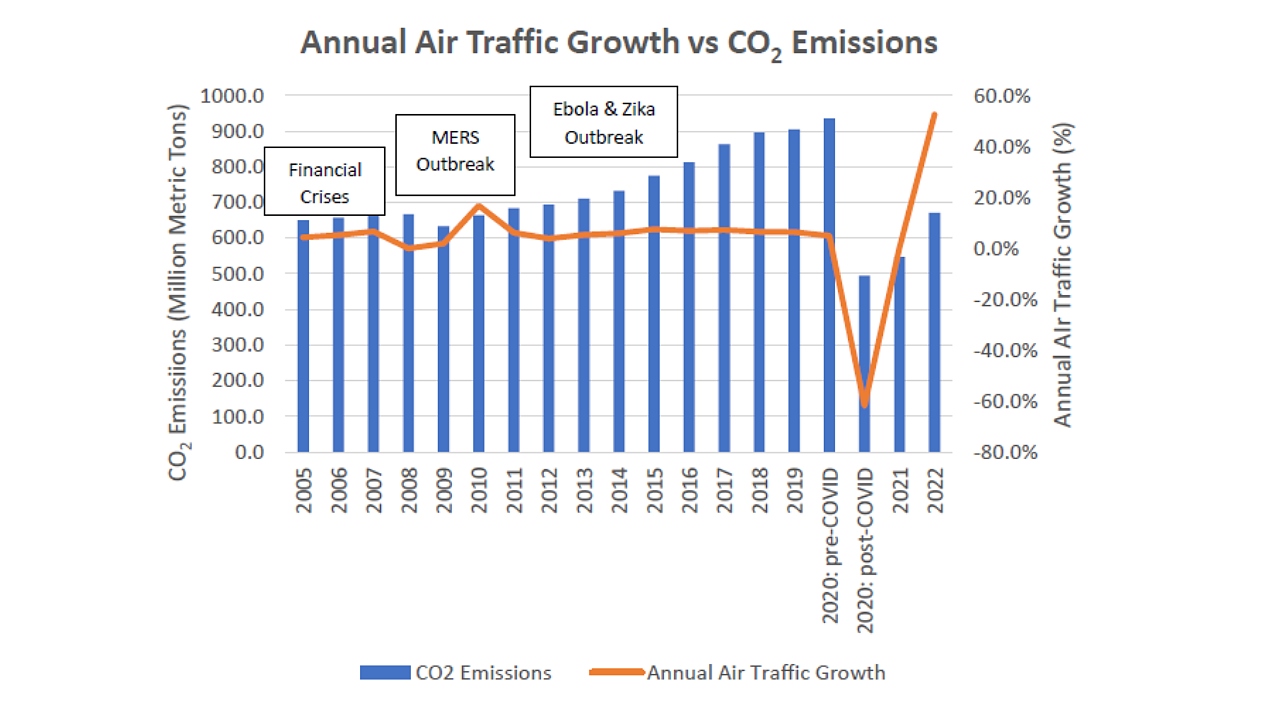
Airport Council International (ACI), the global trade body representing airports, launched the Airport Carbon Accreditation programme in 2009. This programme provides a global carbon management certification programme for airports, where there is an independent assessment of airport efforts to manage and reduce their carbon emissions. There are six levels of certification provided from Level 1 to Level 4+, with the latter being the most advanced.
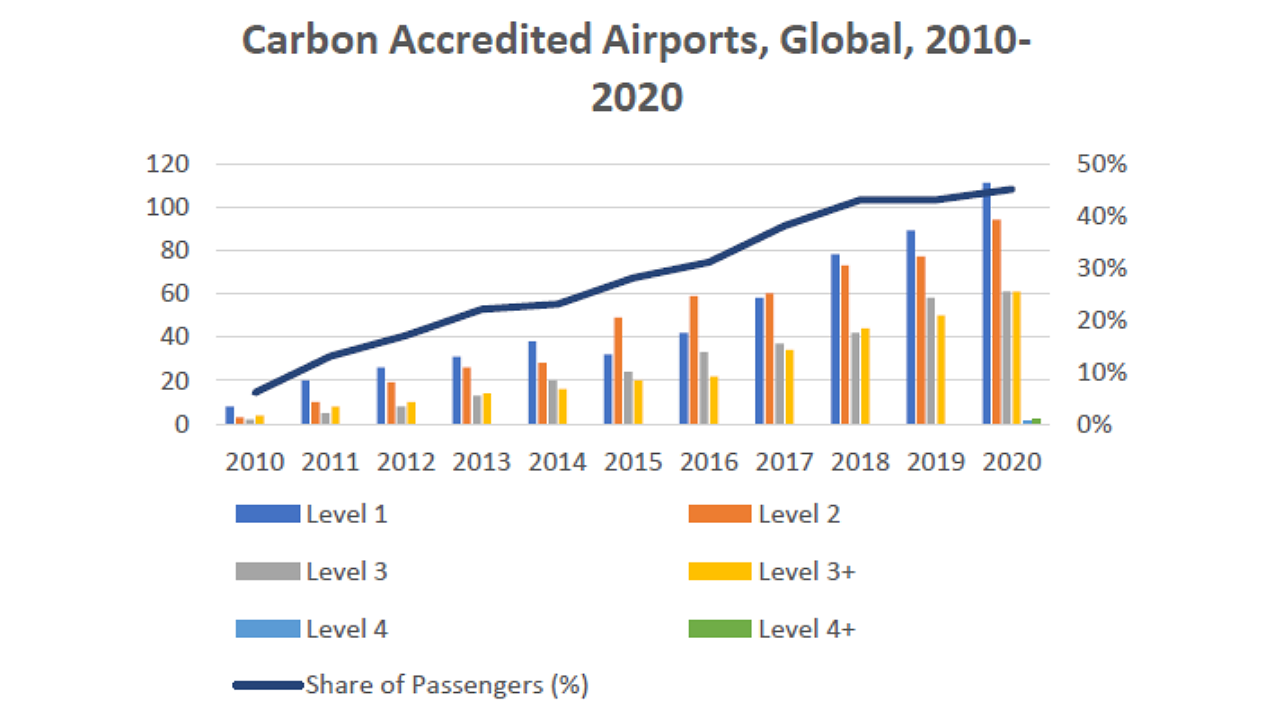
As of 2020, there are more than 300 airports certified by the ACI’s Airport Carbon Accreditation programme. The leading region is Europe, having nearly half of the accredited airports. This is in line with the region’s overall priority given to sustainability. The total share of passenger traffic transiting through these airports was just 6% in 2010, and a decade later the share has risen significantly to 45% in 2020.
As more airports globally gain certificates and improve their sustainability efforts throughout their operations and shift to clean energy, it will significantly reduce the emissions from the aviation industry.
Airbus and Boeing have released reports that highlight the total emissions from the total lifecycle use of their aircraft delivered in 2020, assuming an average lifecycle of 22 years. Cumulatively, the two mega commercial aircraft manufacturer’s deliveries in 2020 will contribute to 600 million tonnes of CO2 over its entire lifecycles.
In the wake of the growing concerns of climate change and global warming, aviation industry stakeholders such as industry bodies (IATA, ACI, ICAO), leading carriers, airports, manufacturers, and maintenance operators have established internal deadlines to attain net-zero emissions and have outlined various initiatives and short-term benchmarks to attain this goal.
More than 192 countries will implement the Carbon Offsetting and Reduction Scheme for International Aviation (CORSIA) plan to reduce fuel burn and optimise operational practices in a phased manner.
A few such deadlines from key stakeholders are listed below:
| Organisation | Aviation Segment | Key Sustainability Goals | Sustainability Strategy |
| International Air Transport Association (IATA) | Airline | * Cap on net aviation CO2; emissions from 2020 (carbon-neutral growth);*Reduction in net aviation CO2 emissions of 50% by 2050, compared to 2005 levels. | * Improved technology (sustainable aviation fuels); *More efficient aircraft operations; * Infrastructure improvements (Optimise air traffic operations). |
| Airports Council International (ACI) | Airport | Achieve net-zero carbon emissions by 2050 | * ACI EUROPE’s - 235 airports in the region have committed to net-zero by 2050; 91 airports are now set to achieve net-zero by 2030; *Strong local government support; * Effective carbon removal measures. |
| International Civil Aviation Organization (ICAO) | International Air Transport | * 2% annual fuel efficiency improvement through 2050; * Carbon neutral growth from 2020 onwards. | * Aircraft technology improvements; * Operational improvements;* Sustainable aviation fuels;* Carbon offsetting schemes (CORSIA). |
| Boeing | Aircraft Original Equipment Manufacturer (OEM) | * Reduce companywide greenhouse gas emissions by 2025;*Aircraft that fly on 100% sustainable aviation fuels by 2030. | * Additive manufacturing to build aircraft with fewer raw materials, creating less waste and improving fuel efficiency;* Innovative materials and processes to improve product efficiency. |
| Airbus | Aircraft Original Equipment Manufacturer (OEM) | * World’s first zero-emission commercial aircraft to market by 2035;* 100% SAF certification by 2030. | * Partnerships with airports to develop hydrogen production, storage, and supply facilities needed for on-ground and on aircraft use. |
| International Airlines Group | Airline Group | * Long-term goal to reach net-zero CO2 emissions by 2050;* 20% reduction in net CO2 by 2030;* 10% reduction in CO2 per passenger kilometre by 2025. | * Offset carbon emissions for all UK domestic flights;* Investing in new aircraft and further improvements in operational fuel efficiency;* Reducing energy use and moving to renewable electricity. |
| Fraport | Airport Operator | * Cut emissions to 125,000 metric tons of CO2 per year in the Group;* Zero emissions at Frankfurt Airport by 2030. | * Co-developed the Airport Carbon Accreditation (ACA) scheme;* Energy consumption in infrastructure;* Optimise energy consumption in traffic and transport;* Leverage efficient and clean energy mix;* Implement Smart air conditioning. |
| Hong Kong Aircraft Engineering Company Limited (HAECO) | Aircraft Engineering & Maintenance Group | * Reduce 26% of CO2 emissions by 2030, compared to 2018 levels; * Reduce 25% of water intensity by 2030, compared to 2018 levels; * Recycle 60% of waste by 2030. | * Derive energy from renewable sources such as sustainable liquid-fuels and waste-derived biogases; * Invest in water efficiency technologies; *Reducing volume of materials utilised. |
Three Pillars to Achieve Net-Zero Emissions
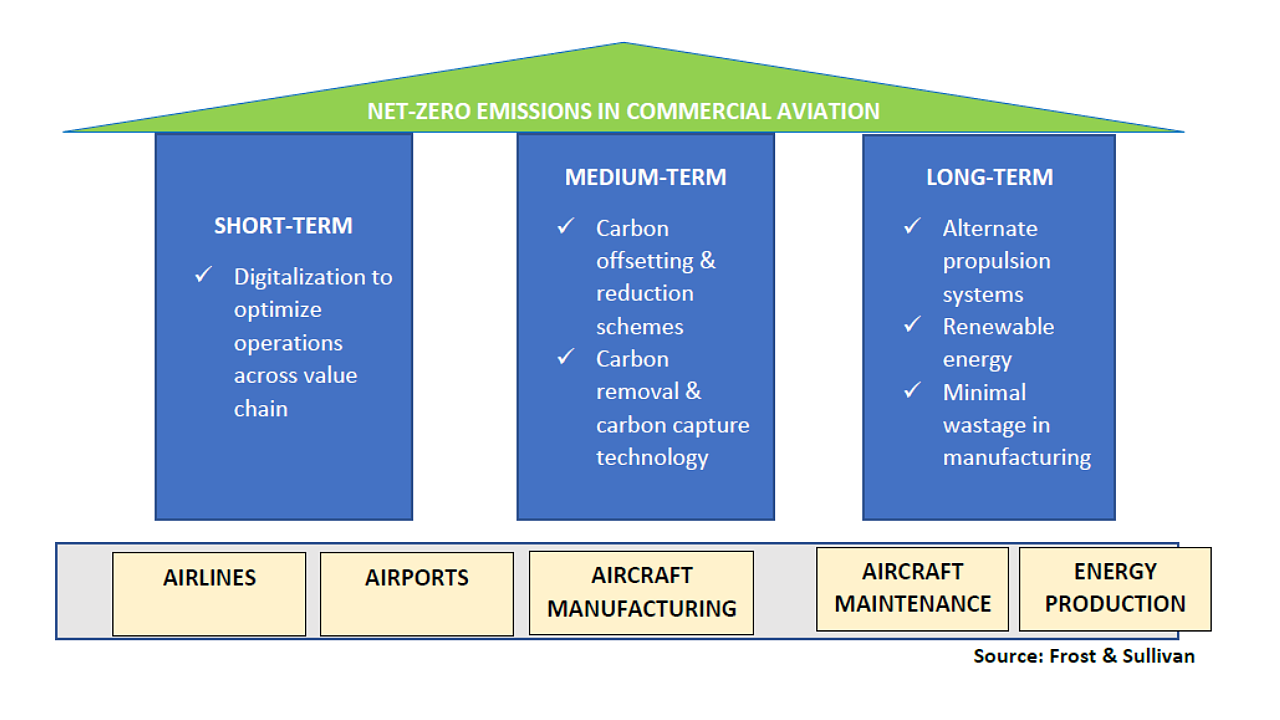
About the Author: Nripendra Singh is Research Director and Abhilash Abraham is Senior Research Analyst in the Aerospace & Defense Practice at Frost & Sullivan.
Note: This article is part of Frost & Sullivan’s four-part article series on sustainability in the aviation industry. The 3 pillars mentioned in exhibit five will be further discussed in the upcoming articles.